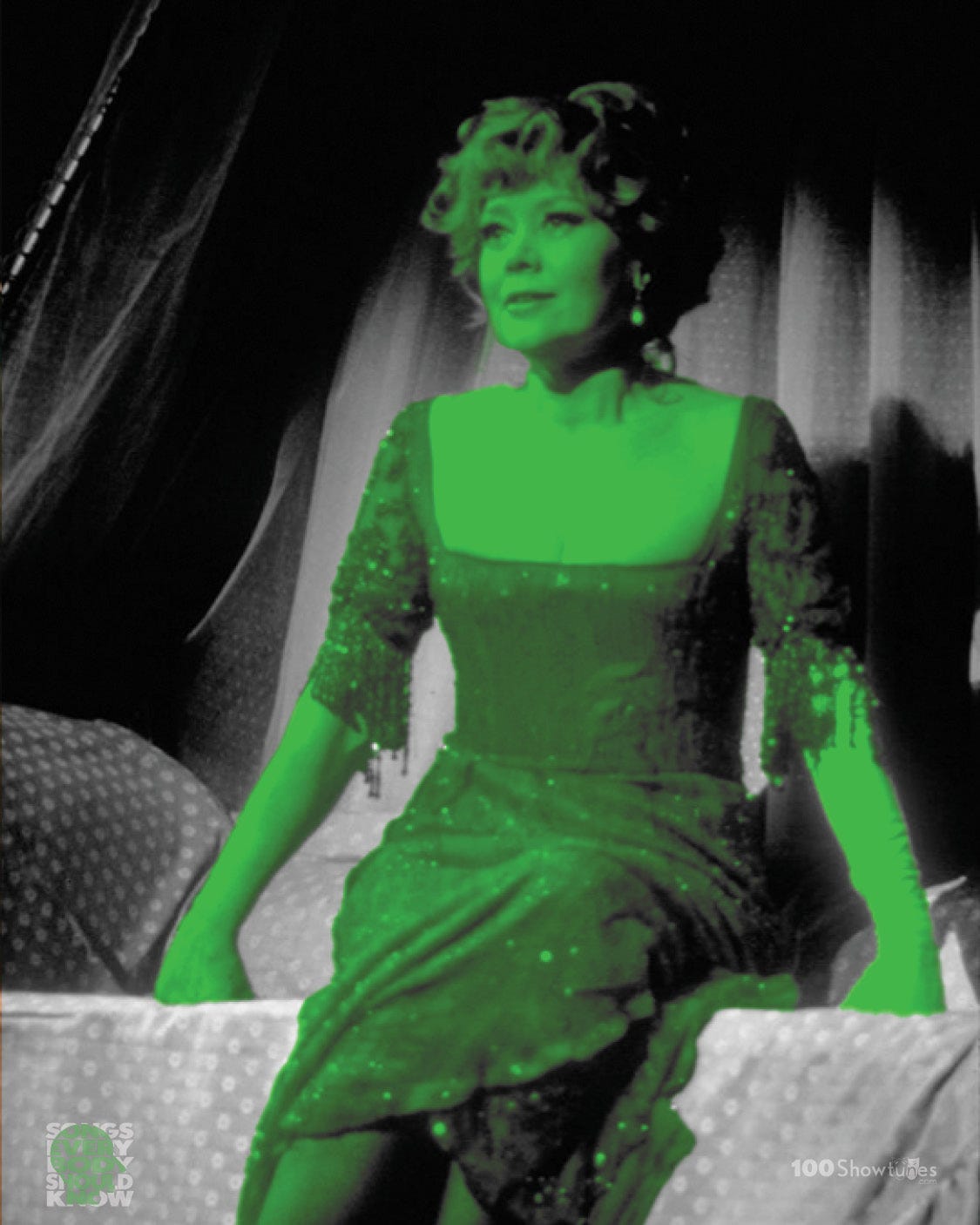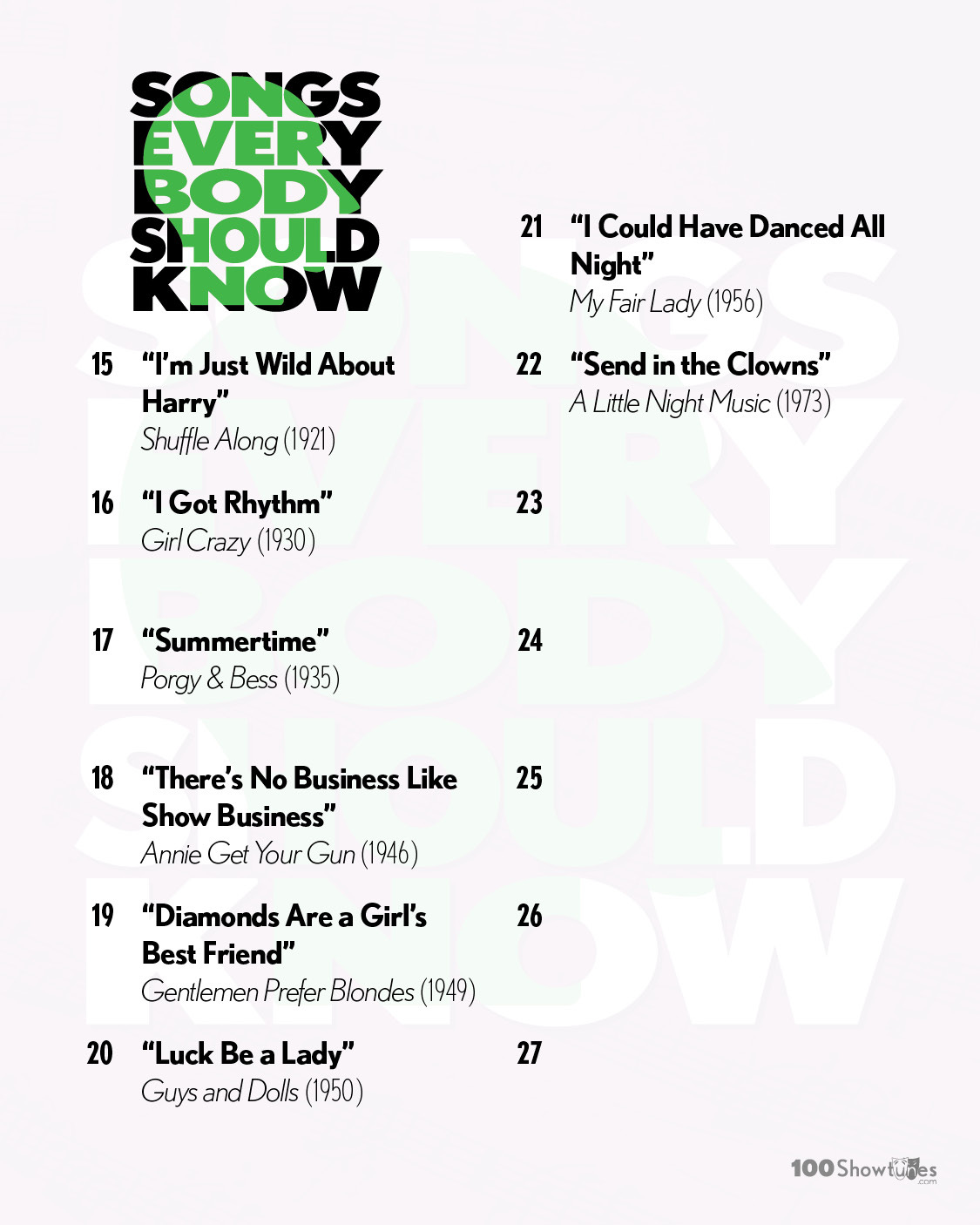No. 22. “Send in the Clowns”
A LITTLE NIGHT MUSIC (1973). By Stephen Sondheim (music and lyrics) and Hugh Wheeler (book). Suggested by the film SMILES OF A SUMMER NIGHT by Ingmar Bergman.
Spring 1973. You’re at A Little Night Music, the third Sondheim-Prince collaboration to hit Broadway in four years (following Company and Follies.) The mildly scandalous show art on your Playbill consists of a tree that, upon closer reflection, reveals a bunch of naked people in the negative space between the branches. The show opens with a beautiful sung overture led by a small ensemble of lieder singers. The setting is among Sweden’s upper crust at the dawn of the 20th century. The main players center around Desiree,an aging unencumbered actress. There’s her wise-beyond-her-years daughter (Frederika), her worldly and opinionated mother (Madame Armfeldt), her lover (Count Carl-Magnus Malcolm) and his wife (Charlotte), and an old flame (Frederick). Frederick lives with his adult son (Henrick) and new wife, Ann. Frederick catches Desiree in a performance, and the couple reconnects, setting off a chain reaction of shifting partners and sensibilities that converge over a weekend at Madame’s country estate. You came to the show expecting something convention-defying and groundbreaking, but this evening is a downright linear romantic farce! Late in act two, with all the romantic conflicts seemingly at an impasse, Desiree comes to terms with the fact that Frederick may be her one true love, even as it’s equally clear that their opportunity has passed. (“Send in the Clowns”)
A Little Night Music was Sondheim and Prince’s attempt at writing a “hit.” (The fact that they looked to an Ingmar Bergman film as a source for populist entertainment explains a lot about who they are.) It’s a traditional linear book musical on the surface, but the intricate weaving together of romances, wry commentary on relationships, and flexible definition of monogamy are a far cry from Rodgers and Hammerstein. As an added layer of musical trickery, the entire score is composed in some variation of waltz time, accentuating all of the love triangles. Perhaps it makes sense that Sondheim’s most conventional musical of the 70s would yield his most popular “hit” song, “Send in the Clowns.” (One gets the sense that Sondheim has always been a little peeved that one of the least technically ambitious songs became his “signature,” as if to validate the critics who found his work too intellectual and complicated.) With its short uncomplicated phrases and universal sentiment (who hasn’t felt like they fouled up a situation so badly that it feels like a joke?), “…Clowns” plays well out of context and has been a favorite by pop-stars, cabaret artists, and grand actresses.
Recommended Recording: ”Send in the Clowns,” Judy Collins, Judith (1975)
While a few artists had covered “Send in the Clowns” following its debut, Judy Collins’ version—arranged and conducted by …Night Music’s original orchestrator Jonathan Tunick—was the most successful, becoming the biggest radio hit of her career. It was popular enough to lead to Stephen Sondheim winning a “Song of the Year” Grammy in 1976. While actors tend to delve deep into the emotional devastation of the piece, Collins floats her light soprano over the lyric without a whole lot of editorializing over the words. The result is a matter-of-fact performance that trusts Sondheim’s work to carry the themes across.
Alternate Performances
A Little Night Music has received 8 cast recordings. Hal Prince directed a 1977 movie that starred Elizabeth Taylor and most of the original Broadway cast. It is dull and dreadful, and the only thing you gain by watching it is the ability to tell people how dull and dreadful it is. Catherine Zeta-Jones led a 2009 Broadway revival that felt like listening to a podcast at .9 speed. Bernadette Peters took over after Zeta-Jones and, while not doing anything about the tempos, brought a lot of energy and humor that much improved the production1.
1973 Original Broadway Cast - “Send in the Clowns” was written during out-of-town previews for original star Glynis Johns (perhaps best known as Mrs. Banks in Mary Poppins). As Sondheim LOVED to tell people, Johns has a thin voice with minimal breath support, so he wrote in short phrases that she could cut off with hard consonants. (Seriously, Stephen—it’s a moderately amusing anecdote, but after the first 20 years, bringing it up at the drop of a hat starts to get rude.) The album (produced by both Goddard Lieberson and Thomas J. Shepherd), is sumptuous and wonderful.
1990 New York City Opera Revival: A 1990 revival at New York City Opera stars Sally Ann Howes (Chitty Chitty Bang Bang) as Desiree. Directed by Scott Ellis, it’s as good a revival as anyone could hope to see. It was filmed for PBS, and while the pro shot has never been made commercially available, one can easily find it online.
Judi Dench: Judi Dench starred in a 1995 London revival at the Royal National Theater and basically set a gold standard for the role. The production—which made some interesting textual changes—released a cast recording, though it can be hard to find. She sings “Send in the Clowns” as part of the televised tribute Hey Mr. Producer! The Musical World of Cameron Mackintosh and its readily available cast recording. Nearly 30 years later, she sang it again in Stephen Sondheim’s Old Friends: A Celebration.
Is it Covered by The Rat Pack, Audra McDonald, or Glee?
The Rat Pack: Frank Sinatra recorded “Send in the Clowns” in 1973 and had a decent hit with it (though not nearly as successful as the Judy Collins version)
Audra McDonald sings “Send in the Clowns” in Six by Sondheim, a documentary that compiles interview clips and new performances to dig deep into Sondheim’s legacy and process through six of his signature songs. The “Send in the Clowns” segment features a montage of YouTube clips showing various celebrity performances during the years before segueing to Audra singing surrounding by racks of lighting equipment, accompanied by husband, Will Swenson, on guitar. (For some reason, this performance uses an additional bridge that Sondheim wrote at the request of Barbra Streisand.) Audra also sings a song written for the the movie version—“The Glamorous Life,” which replaces a different song of the same name from the stage version—on her album Go Back Home and as part of the “Red Dress” section of 2010’s Sondheim! A Birthday Celebration. According to recent interviews, Sondheim had reached out to Audra about leading a Night Music revival, to which she replied (and I’m paraphrasing), “That’s cool—I’m into it…but I was thinking about maybe doing Gypsy first, if that works.” So hopefully a little Audra …Night Music is on the horizon?
In the Wings
Song No. 23 will drop next week! Until then, I suggest checking out my first exposure to “Send in the Clowns,” a the 1993 episode of The Simpsons: “Krusty Gets Kancelled.” The lines “Send in those soulful and doleful, Shmaltz-by-the-bowlful clowns” has lived in my head rent free for 32 years. If you really want a research assignment, you may want to compare the varying accounts of how Sondheim came to write a new bridge for Barbra Streisand, as seen in Babs’ epic memoir and Sondhiem’s collection of annotated lyrics, Finishing the Hat.




